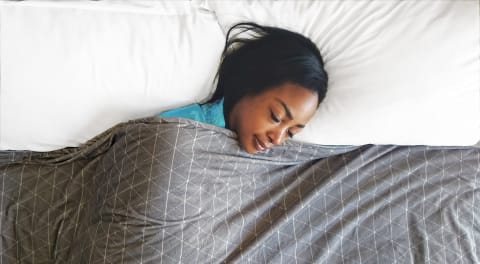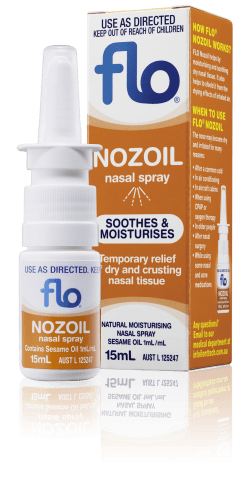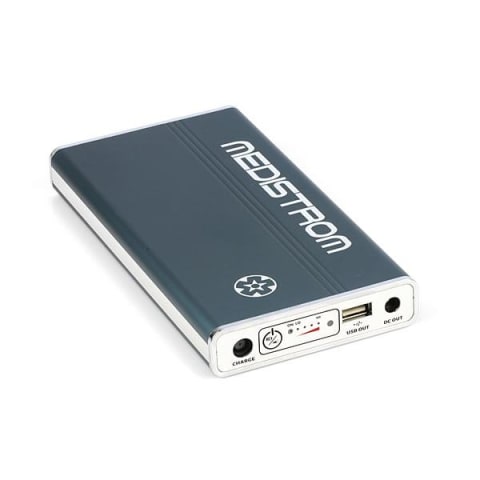CPAP Machine and flying
Flying with a CPAP Machine: Your Complete Travel Guide
Travelling is one of life’s great joys — whether it’s a long-awaited overseas holiday, a quick weekend away, or an interstate business trip. But for people who use CPAP therapy, especially those new to it, travelling (and flying in particular) can feel daunting. You may be asking yourself: Can I take my CPAP machine on a plane? Will it count as carry-on? What happens if there’s no power outlet? Can I keep up my therapy while away?
The good news is that with the right preparation and support, taking your CPAP machine on a flight is not only possible — it can be surprisingly easy.
At Sove CPAP Clinic, we help thousands of Australians manage their therapy at home and away, and we’ve gathered everything you need to know about flying with your device in this travel-focused guide. From understanding airline rules to choosing the right machine for portability, we’re here to help you breathe easier wherever you go.
Can You Use a CPAP Machine While Flying?
Yes, you can. Most airlines allow CPAP machines to be used during flight, especially on longer routes where passengers might sleep. Many CPAP users choose to use their device on overnight flights or when crossing time zones, as skipping a night of therapy can lead to fatigue, headaches, or snoring — not ideal when you’re trying to enjoy or recover from a journey.
However, you will need to do a little planning:
- Contact the airline ahead of time: Ideally at least 48 hours before your flight. Let them know you’ll be travelling with a CPAP machine and plan to use it onboard.
- Ask about in-seat power access: Not all seats, even in premium cabins, are equipped with power ports. And even when available, not all ports can power a CPAP machine. That’s where a travel battery can come in handy.
- Sit near a window if required: Some airlines may ask you to use a window seat so your tubing and machine don’t obstruct access to the aisle.
While these small steps require some prep, they’re well worth it to maintain uninterrupted therapy and arrive at your destination feeling refreshed.
How Can I Check If My CPAP Machine Meets Airline Requirements?
Airlines, particularly international ones, have specific requirements for using medical devices in the air. Thankfully, many travel-friendly CPAP machines already comply with these standards.
Here’s what to check:
- FAA or equivalent approval: Most travel CPAP machines (like the ResMed AirMini) are labelled as FAA-approved. This means they’ve passed the safety checks required for in-flight use.
- Manufacturer documentation: It’s a good idea to print or save the compliance certificate provided by your machine’s manufacturer. These are often found on the brand’s website and confirm that your device is approved for in-flight use.
- Battery safety paperwork: If you plan to use a battery (which is common for long-haul flights), make sure the battery is airline-compliant and includes proper safety labels. Most airlines allow lithium-ion batteries under a certain watt-hour limit, provided they’re carried in hand luggage.
If you’re unsure, just bring your CPAP details to your consultation at Sove CPAP Clinic. Our CPAP consultants can help verify your device’s compliance and assist with any forms or documentation your airline might require.
Travel CPAP Machines Are Designed for Portability and Reliable Daily Use
Travel CPAP machines have come a long way — they’re smaller, lighter, and just as reliable as standard units. Designed to be both portable and powerful, these devices offer a high level of therapy performance without the bulk.
Key features of modern travel CPAP machines include:
- Ultra-compact design: Most travel models are lightweight and fit easily into carry-on luggage or a backpack.
- Smartphone integration: Many travel CPAPs can connect via Bluetooth to an app, allowing you to monitor usage and performance.
- Altitude adjustment: Automatically adjusts for cabin pressure changes, ensuring consistent therapy at high altitudes.
- Optional humidification: Some use waterless humidifiers (like ResMed HumidX) for convenience, while others have removable humidifier chambers.
Recommended Models Available at Sove:
ResMed AirMini: An ultra-compact and lightweight option with Bluetooth connectivity. It uses ResMed’s HumidX waterless humidification system, which eliminates the need for carrying distilled water.
Fisher & Paykel SleepStyle+: While slightly larger, this machine includes a built-in humidifier and is still portable, ideal for longer trips or those who prefer a traditional setup.
These machines are designed for everyday use too — meaning you can use your travel machine full-time if you prefer. Some patients even choose to keep a smaller travel unit permanently packed, ready for spontaneous getaways.
ALWAYS FOLLOW THE DIRECTIONS FOR USE. CPAP is used for Obstructive Sleep Apnoea treatment. When considering whether CPAP is right for you, speak to your doctor.
Travel FAQs: Flying with a CPAP Machine
Does a CPAP Machine Count as a Carry-On or Personal Item?
In most cases, no — a CPAP machine is classified as a medically necessary device, which means airlines do not count it against your carry-on baggage allowance. This is true for both domestic and international flights. However, it’s important to pack your device in a case that clearly identifies it as medical equipment. Most CPAP machines come with a dedicated travel bag, and if not, Sove can supply you with one.
You should still let the airline know you’re travelling with a CPAP machine. We recommend contacting your airline 48 hours before your flight to confirm their policy. While the machine won’t count as a personal item, gate staff and cabin crew will appreciate knowing that you’re bringing a device onboard.
If you’re concerned about overhead bin space, arrive early and speak with the gate staff so they can help accommodate your needs.
How Do I Pack My CPAP Machine for Travel?
Packing your CPAP properly ensures it stays protected and ready to use throughout your trip. Here’s a step-by-step guide:
- Use the original or a padded travel case – This keeps the machine safe from bumps and pressure changes. Many travel CPAP models come with their own compact hard-shell cases.
- Empty the humidifier chamber – If your CPAP uses water, empty the tank before travelling to prevent spills. Wipe it dry and reassemble loosely to keep parts in place.
- Keep it in your carry-on – Never check your CPAP in with your luggage. It’s medical equipment, and checking it risks damage or delay.
- Bring a power adapter and international plug converter – If you’re travelling overseas, make sure you have the correct plug for your destination. Most modern CPAP machines are dual-voltage.
- Pack extra supplies – Bring a few spare filters, a mask cushion, tubing, and cleaning wipes. Unexpected damage, delays, or weather changes can make spares invaluable.
- Print a travel letter – Ask your sleep physician for a letter stating your need for CPAP therapy. It’s rarely needed, but can help at customs or security checks.
Can You Plug In a CPAP Machine on an Airplane?
In-seat power availability varies widely between airlines and aircraft. While some business class and premium economy seats do offer outlets that can power a CPAP, it’s not guaranteed — and economy seating may not have power at all.
If your seat does have a power outlet, confirm in advance whether it’s suitable for medical equipment. Most CPAP machines draw relatively low wattage (under 90W), but power ports can vary. You may need a specific adapter to use the outlet.
Because of this uncertainty, the best strategy is to bring a portable CPAP battery pack that’s been approved for air travel. These batteries are lightweight, compact, and designed to last one or more nights depending on your settings. Brands like ResMed and Philips offer branded battery options compatible with their travel models. We can help you select a pack based on your machine and trip duration.
Remember to keep your battery in your carry-on (not checked luggage), and always confirm the airline’s lithium battery policy before flying.
Can I Use Bottled Water in My CPAP Machine While on a Flight?
Ideally, you should use distilled water in your CPAP humidifier, as it prevents mineral build-up and extends the life of your machine. However, we understand that distilled water isn’t always accessible while travelling.
For short trips, using bottled water for a few nights is acceptable. If you do this:
- Use non-sparkling, non-flavoured bottled water only
- Rinse the water chamber thoroughly with distilled water once you have access to it again
- Avoid using tap water unless it’s been boiled and cooled
An even easier solution for travellers is to use a CPAP with waterless humidification. The ResMed AirMini, for example, uses HumidX cartridges — small disposable disks that capture and recycle heat and moisture from your breath. This system is highly effective for most users and eliminates the need to carry any water at all.
If your machine supports turning off humidification altogether, you can disable it temporarily during your flight. In dry cabin air, this may be slightly less comfortable, but many users tolerate it well for short-term use.
Is It Worth Getting a Travel CPAP Machine?
For many CPAP users — especially frequent flyers or those with an active lifestyle — a travel-specific CPAP machine is absolutely worth it. Here’s why:
Portability: Travel CPAPs are smaller and lighter, fitting easily into carry-ons or backpacks. This makes them easier to carry through airports, onto planes, or into hotels.
Battery compatibility: Most travel models have approved battery options for overnight use, which is ideal for camping, red-eye flights, or remote locations.
Waterless humidification: Options like HumidX (ResMed) or heat-moisture exchange systems remove the need to carry distilled water.
Protection for your primary machine: Using a travel machine while away protects your full-size home device from bumps or wear.
Simplicity: Travel units often have fewer parts and a more compact layout, making them faster to pack and easier to maintain.
At Sove, we offer travel CPAP trials and bundle packages that include machines, cases, batteries, and mask accessories. This allows you to experience a travel setup before investing long-term. Some patients even decide to use their travel unit full-time because of how quiet, compact, and simple they are.
Still not sure? Speak with our consultants — in person or via telehealth — and we’ll walk you through what travel setup works best for your goals, destinations, and therapy requirements.













